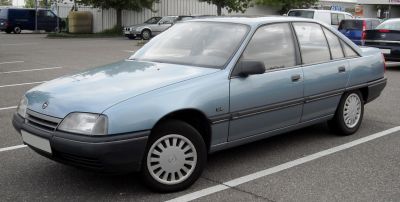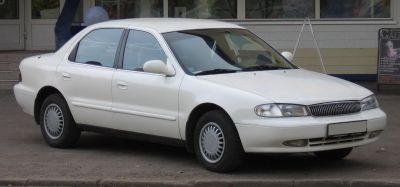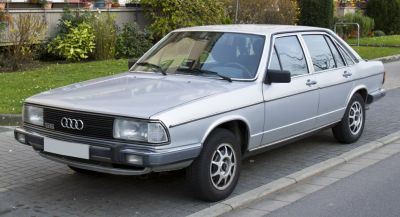 2011 Hyundai i40 Sedan Dimensions, Size & Specs
2011 Hyundai i40 Sedan Dimensions, Size & SpecsMeasurements of the 2011 Hyundai i40 Sedan, engineered for optimal performance and comfort
| Dimensions | |
|---|---|
| Length: | 4770 mm187.8 in15.6 ft |
| Width: | 1815 mm71.5 in6.0 ft |
| Height: | 1470 mm57.9 in4.8 ft |
| Trunk Capacity: | 525 liter18.5 cu ft |
| Trunk Capacity (Max): | 1672 liter59.0 cu ft |
| Weight Specifications | |
| Curb Weight: | 1395-1514 kg3075-3338 lbs |
| Maximal permitted Weight: | 2030-2150 kg4475-4740 lbs |
| Tire Specifications | |
| Rims Sizes: | 16-inch rims:
|
| Tire Sizes: |
|
The Hyundai i40 Sedan, produced from 2011 to 2015, is a midsize family sedan known for its balanced proportions and practical interior space. This generation of the i40 offers a length of 4770 mm (187.8 inches), a width of 1815 mm (71.5 inches), and a height of 1470 mm (57.9 inches), providing a comfortable cabin space while maintaining a sleek and aerodynamic profile. The curb weight ranges from 1395 kg to 1514 kg (3074 to 3338 lbs), depending on the configuration, balancing fuel efficiency with a solid road presence. The maximum permissible weight varies between 2030 kg and 2150 kg (4475 to 4739 lbs). One of the standout features of the i40 Sedan is its generous luggage capacity, offering 525 liters (18.5 cubic feet) of trunk space in standard configuration, which expands significantly to 1672 liters (59 cubic feet) when the rear seats are folded down, making it exceptionally versatile for larger cargo. The vehicle rides on rim sizes ranging from 16 to 18 inches, including 7.0J x 16, 7.5J x 17, and 8.0J x 18 options, providing a variety of tire choices. Corresponding tire sizes include 205/60 R16, 215/50 R17, and 225/45 R18, allowing for a balance between comfort and handling performance. Overall, the Hyundai i40 Sedan from this generation offers a well-rounded package of spaciousness, practicality, and stylish design, meeting the needs of families and commuters looking for a reliable and comfortable mid-size sedan option.
Discover the standout features that make the 2011 Hyundai i40 Sedan a leader in its class
Have a question? Please check our knowledgebase first.
The Hyundai i40 Sedan from the 2011 to 2015 production period measures 4770 mm (187.8 inches) in length, 1815 mm (71.5 inches) in width, and 1470 mm (57.9 inches) in height. These dimensions place the i40 firmly in the mid-size sedan category, providing a spacious cabin and comfortable ride quality. The length offers enough legroom and trunk space for typical family usage, while the width balances interior space with urban drivability. The height contributes to an aerodynamic profile and easy ingress and egress.
The curb weight of the Hyundai i40 Sedan ranges from 1395 kg to 1514 kg (3074 to 3338 lbs), depending on the trim and equipment levels. This moderate weight allows the vehicle to maintain good fuel efficiency and nimble handling characteristics. A lighter curb weight typically results in more responsive acceleration and better fuel economy, while a heavier weight may provide a more planted, stable ride. The i40 balances these aspects to offer a comfortable and efficient driving experience suitable for daily commuting and longer trips.
With the rear seats in place, the Hyundai i40 Sedan offers a generous luggage capacity of 525 liters (18.5 cubic feet), making it practical for everyday use such as grocery runs or weekend bags. When the rear seats are folded down, this capacity expands significantly to 1672 liters (59.0 cubic feet), accommodating larger items, bulky cargo, or even enabling light moving tasks. This versatility makes the i40 a practical choice for buyers needing the flexibility of ample cargo space in a sedan format.
The Hyundai i40 Sedan comes equipped with various rim and tire size options: rims ranging from 7.0J x 16, 7.5J x 17, 8.0J x 18, and corresponding tires sized 205/60 R16, 215/50 R17, and 225/45 R18 respectively. Larger rim and tire setups, like the 18-inch option, generally improve road grip and sharpness in handling at the expense of a slightly firmer ride and potentially higher tire replacement costs. Smaller sizes tend to prioritize comfort and fuel economy. Buyers can choose based on their preference for sportiness versus ride comfort.
Yes, the Hyundai i40 Sedan fits comfortably in a standard residential garage. Typical garage dimensions are about 2400 mm (94.5 inches) wide and 4800 mm (189 inches) deep, and the i40’s dimensions of 4770 mm (187.8 inches) in length and 1815 mm (71.5 inches) in width provide sufficient space for easy parking and door opening. Its 1470 mm (57.9 inches) height is also well within the limits of standard garage door height. Owners can expect convenience and protection without needing special accommodations.
The Hyundai i40 Sedan introduced in 2011 replaced the i50 and was a more refined and slightly larger vehicle. Measuring 4770 mm (187.8 inches) in length and 1815 mm (71.5 inches) in width, it expanded on the predecessor’s footprint, offering improved interior space—especially for rear passengers—and enhanced luggage capacity. The increased size contributed to better ride comfort and safety features while maintaining competitive fuel efficiency. Overall, the i40 offered a more modern, spacious, and aerodynamic design compared to the previous generation.
Compared to contemporaries like the Toyota Avensis, Ford Mondeo, or Volkswagen Passat from the early 2010s, the Hyundai i40 Sedan is competitive in size. Its 4770 mm (187.8 inches) length and 525-liter (18.5 cubic feet) luggage capacity align well with rivals, often offering slightly more cargo space when rear seats are folded (1672 liters or 59.0 cubic feet). The width and height also fall within the typical mid-size sedan range, positioning the i40 as a practical and spacious alternative in its segment, especially notable for its value proposition and equipment levels.
The Hyundai i40 Sedan has a maximum weight (gross vehicle weight rating) ranging from 2030 kg to 2150 kg (4475 to 4740 lbs), depending on the version. This figure represents the total allowable weight including the vehicle’s curb weight, passengers, cargo, and fuel. Given the curb weight range of 1395 to 1514 kg, this means the useful payload capacity ranges roughly between 516 and 755 kg (1137 to 1664 lbs), sufficient for up to five occupants plus luggage or additional load. Understanding this limit is important to avoid overloading, which can affect performance, safety, and longevity.
The Hyundai i40 Sedan is designed to maximize passenger comfort through spacious interior dimensions, although exact interior measurements vary by source, the vehicle offers generous legroom, headroom, and shoulder space for both front and rear occupants. Its 1815 mm (71.5 inches) width translates into a roomy cabin, while the 1470 mm (57.9 inches) height helps with head clearance. Comfort is enhanced by well-cushioned seats, ergonomic layout, and quality materials. The i40 caters to families and professionals seeking a quiet, comfortable ride during commutes or longer travel.
The Hyundai i40 Sedan launched with several modern technological and safety features for its time, including multiple airbags, electronic stability control, anti-lock brakes, and traction control as standard or optional depending on the market and trim level. It also featured advanced infotainment options like touchscreen navigation systems, Bluetooth connectivity, and premium audio setups. The i40 emphasized both driver and passenger safety, comfort, and convenience, aligning with Hyundai’s aim to compete strongly in the mid-size segment globally.
Discover similar sized cars.

| Production: | 1998-2002 |
|---|---|
| Model Year: | 1998 |
| Length: | 4580-4720 mm180.3-185.8 in |
| Width: | 1725 mm67.9 in |
| Height: | 1340-1375 mm52.8-54.1 in |

| Model Year: | 1978 |
|---|---|
| Length: | 4705 mm185.2 in |
| Width: | 1722-1730 mm67.8-68.1 in |
| Height: | 1410 mm55.5 in |

| Production: | 1986-1993 |
|---|---|
| Model Year: | 1987 |
| Length: | 4740-4770 mm186.6-187.8 in |
| Width: | 1760-1810 mm69.3-71.3 in |
| Height: | 1435-1445 mm56.5-56.9 in |

| Production: | 1996-1998 |
|---|---|
| Model Year: | 1996 |
| Length: | 4696 mm184.9 in |
| Width: | 1770 mm69.7 in |
| Height: | 1420 mm55.9 in |

| Production: | 1979-1982 |
|---|---|
| Model Year: | 1979 |
| Length: | 4683 mm184.4 in |
| Width: | 1768 mm69.6 in |
| Height: | 1390 mm54.7 in |

| Production: | 1976-1979 |
|---|---|
| Model Year: | 1976 |
| Length: | 4680 mm184.3 in |
| Width: | 1768 mm69.6 in |
| Height: | 1390 mm54.7 in |

| Production: | 1979-1982 |
|---|---|
| Model Year: | 1979 |
| Length: | 4695 mm184.8 in |
| Width: | 1768 mm69.6 in |
| Height: | 1390 mm54.7 in |

| Production: | 2012-2014 |
|---|---|
| Model Year: | 2012 |
| Length: | 4729 mm186.2 in |
| Width: | 1782 mm70.2 in |
| Height: | 1465 mm57.7 in |
